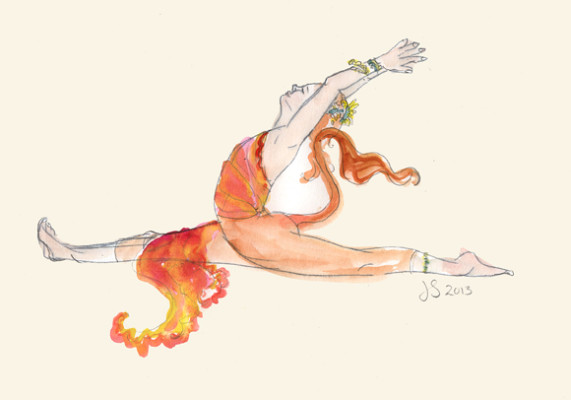Asana Origins, Philosophy, Mythology and Play
written on Sunday, 17 Mar 2013 by Jo Stewart, Garden Of Yoga
written on Sunday, 17 Mar 2013 by Jo Stewart, Garden Of Yoga

‘We can open up to our inner life through the asanas if we are receptive to their hidden meaning and to our own hidden depths...your observations, your mind, your relationship with the world. And it expands into the universal, to the mythologies of our cultures, and to the interconnection among us through the subtle force sustaining all life.’ (Swami Lalitananda, The Inner Life of Asanas)
“Mythology is not a lie, mythology is poetry, it is metaphorical.
It has been well said that mythology is the penultimate
truth--penultimate because the ultimate cannot be put into words. It is
beyond words. Beyond images, beyond that bounding rim of the Buddhist
Wheel of Becoming. Mythology pitches the mind beyond that rim, to what
can be known but not told.”
? Joseph Campbell, The Power of Myth
Yoga is all about learning about ourselves by observing the world. Often in class this takes a subtle form- maybe tuning into your inner warrior spirit and standing a little stronger in Virabdirasana. Hopefully as well, this new awareness of our own inner power, flows off our mats and into our lives, encouraging us to take mindful action, where we may have been too timid to in the past.
The origins and spirit of each asana is also something we can play with in class, maybe giving the tail a little wag in ardha mukha svanasana (downfaced dog pose). Or revelling in the fluidity of a cat-like spine in Majariasana. The identity of each asana is often a metaphor for our experience of each posture and a way of elevating it. Visualizing a firmly rooted tree, staying grounded while gracefully swaying in the breeze, steadies us mentally when our Vrksasana (tree pose) gets a little shaky.
It was only after I finished painting, I realise that I’d chosen Hanumanasana- my own personal ‘challenge’ pose. Through my journey with the spilts, there is a niggle of “i should be better at this- I’m a yoga teacher” or ‘why aren’t I getting anywhere with this’ and a hint of just wanting to do it because it is such an awesome looking posture. All the while knowing, that the postures that don’t come easily teach us more about ourselves, say the nature of ego and being constrained by a smaller sense of self (I am more than tight hamstrings). It’s also where I’ve learned about patience out of frustration, and benefit of staying grounded in the present moment, rather than mentally darting of to a glittery easy splits future. Surely every tuning into the mythology of Hanuman’s epic leap can only elevate the experience, transcending it beyond the waiting patiently for tight muscles to lengthen.
"It was the greatest leap ever taken. The speed of Hanuman's jump pulled blossoms and flowers into the air after him and they fell like little stars on the waving treetops. The animals on the beach had never seen such a thing; they cheered Hanuman, then the air burned from his passage, and red clouds flamed over the sky . . ." (Ramayana, retold by William Buck).
Who wouldn’t feel better about not getting their crotch to the floor when you can visulalize blossoms falling from the sky that fell like stars? This asana commemorates Hanauman’s spectacular leaps between India and Sri Lanka, to find Rama’s wife Sita and bring back a mountain of healing herbs.
My Asana Origins Workshop comes from a curiosity and respect for the history of each asana, but also a deep love of fancy dress! I’m someone who celebrates their birthday every year with a themed fancy dress party and spends the weeks leading up to a festival in a flurry of glittery creation. I love the idea of building a mane to go with the furry lion pants I already own- and seeing what everyone else will create!
‘ To say that you can’t take life seriously and that life shouldn’t be taken seriously is not to say that life is trivial or frivolous. Quite the contrary. There’s nothing the least bit frivolous about the playful nature of the universe. Playfulness at a fully conscious level is extremely profound. In fact there is nothing more profound. Wit and playfulness are dreadfully serious transcendence of evil.’
— Tom Robbins